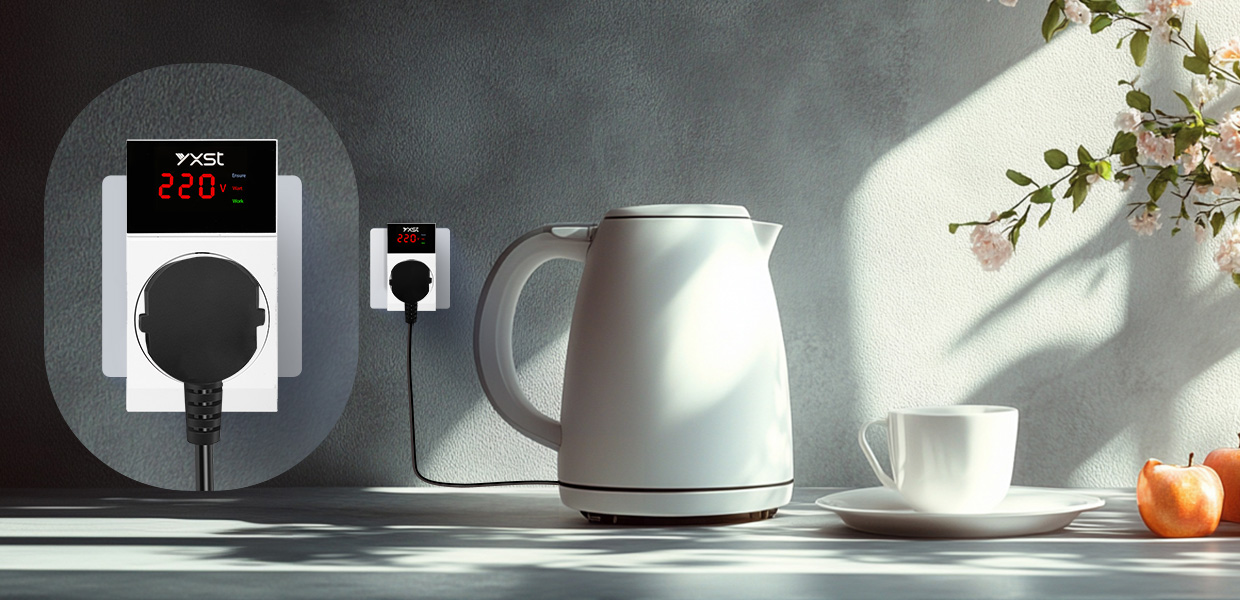Voltage Protector 220V vs Automatic Voltage Switch
Date:2025-04-16 Click:558
In today’s world, where electronic devices are integral to daily life, protecting your appliances from voltage fluctuations is crucial. Two popular solutions for managing power supply issues are the Voltage Protector 220V and the Automatic Voltage Switch. But how do they differ, and which is right for your needs? This article breaks down their features, benefits, and ideal use cases to help you decide.
What Is a Voltage Protector 220V?
Voltage Protector 220V is a device designed to safeguard appliances from voltage spikes, surges, or drops. It monitors the incoming voltage and automatically disconnects power if it detects levels outside the safe range (typically 165V–255V).
Key Features:
- Surge Protection: Shields devices from sudden voltage spikes caused by lightning or grid issues.
- Over/Under-Voltage Cutoff: Instantly cuts power if voltage exceeds or drops below the safe threshold.
- Delay Timer: Prevents rapid cycling by delaying reconnection until voltage stabilizes.
- Compact Design: Easy to install between the wall socket and appliance.
Best For: Homes or offices in areas with unstable power grids, or for protecting high-value electronics like TVs, refrigerators, or computers.
What Is an Automatic Voltage Switch?
An Automatic Voltage Switch (AVS) focuses on maintaining a stable power supply by switching between multiple voltage sources. For example, it can shift from grid power to a generator or inverter during outages. Some advanced models also regulate voltage to ensure consistent output.
Key Features:
- Source Switching: Automatically transfers the load to a backup power source during outages.
- Voltage Regulation: Adjusts voltage to a safe range (e.g., 220V–240V) for connected devices.
- Prioritized Power Sources: Allows users to set preferences (e.g., prioritize solar power over the grid).
- Wide Input Range: Can handle broader voltage fluctuations (e.g., 90V–280V).
Best For: Areas with frequent power cuts or unstable voltage, or setups using hybrid power sources (grid + solar/generator).
Voltage Protector 220V vs. Automatic Voltage Switch: Key Differences
| Feature | Voltage Protector 220V | Automatic Voltage Switch |
|---|---|---|
| Primary Function | Disconnects power during fluctuations | Switches between power sources + regulates voltage |
| Voltage Range | Narrow (170V–250V) | Wider (e.g., 90V–280V) |
| Surge Protection | Yes | Depends on model |
| Ideal Use Case | Protecting single appliances | Whole-home backup + voltage control |
Which Should You Choose?
Choose a Voltage Protector 220V if you want to protect specific devices (e.g., AC, refrigerator) from surges or minor fluctuations. It’s cost-effective and easy to install.
2. For Whole-Home Power Management:
Opt for an Automatic Voltage Switch if you experience frequent outages or extreme voltage swings. It ensures seamless power transition and stable voltage for all appliances.
3. For Maximum Safety:
In areas with severe voltage instability, combine both! Use a Voltage Protector for critical devices and an AVS for whole-home regulation.
Conclusion
Both Voltage Protectors 220V and Automatic Voltage Switches play vital roles in safeguarding electronics, but their applications differ. Assess your power supply challenges, budget, and needs to make the right choice. For localized protection, a Voltage Protector suffices. For comprehensive power management, invest in an Automatic Voltage Switch.
By understanding these devices, you can prevent costly damage to your appliances and enjoy an uninterrupted power supply year-round!
🔌 Need help choosing? Contact our experts for a personalized recommendation!



